Scientific name
Xanthopimpla stemmator (Thunberg)
Taxonomic position
Hymenoptera: Ichneumonidae: Pimplinae
Diagnosis
Females: Body bright yellow with the following markings: head with ocellar triangle black, mesoscutum with a pair of black spots in front and a smaller median spot in front of scutellum (very rarely, mesoscutum completely yellow); abdominal tergites 1-7 usually with a pair of black spots, eighth tergite always without any spots, those on sixth tergite often much smaller or missing; second tergite always with a pair of black marks.
Males: Body bright yellow, mesoscutum as in female, but all abdominal tergites with black spots (including eighth); hind tibia not black at base.
Images
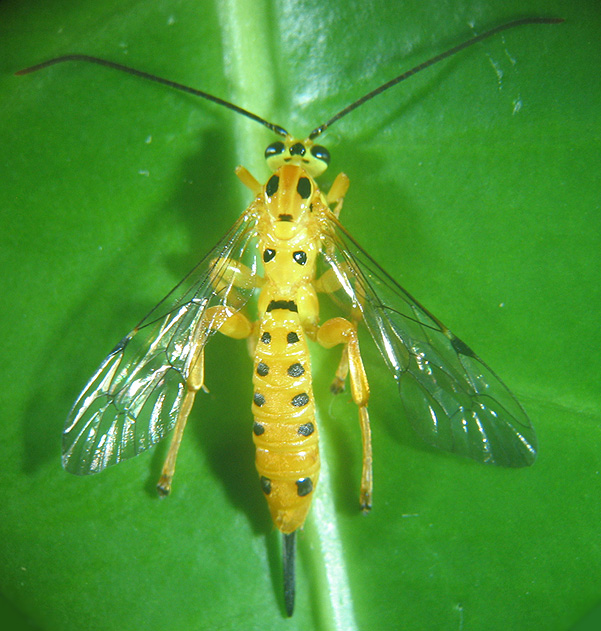
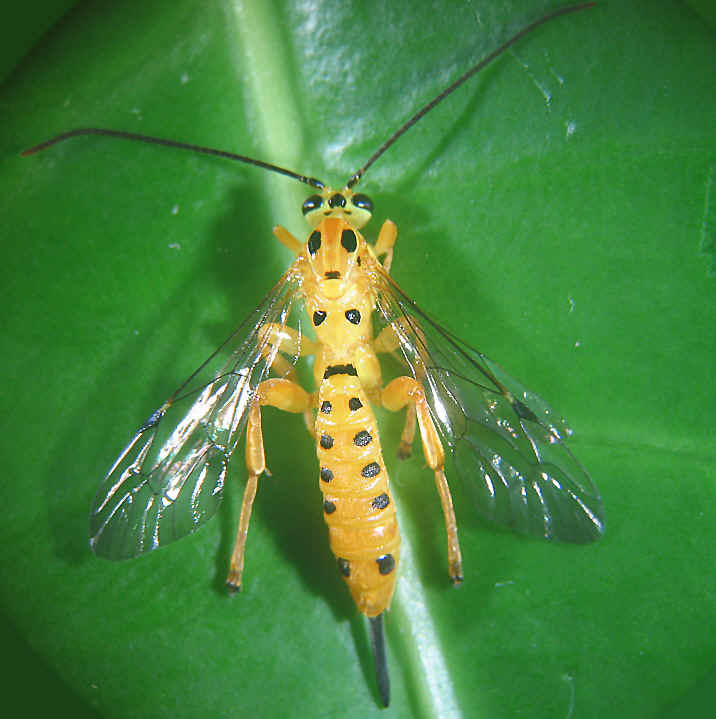 Adult female Adult female
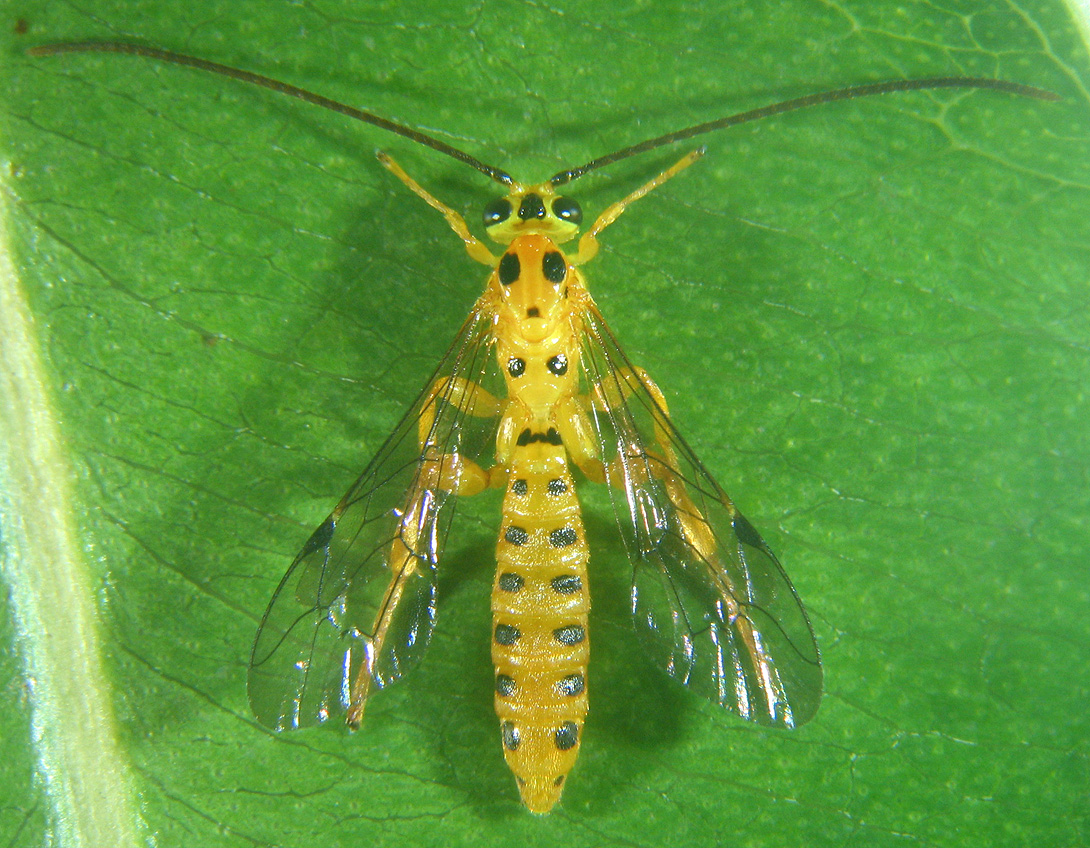 Adult male Adult male
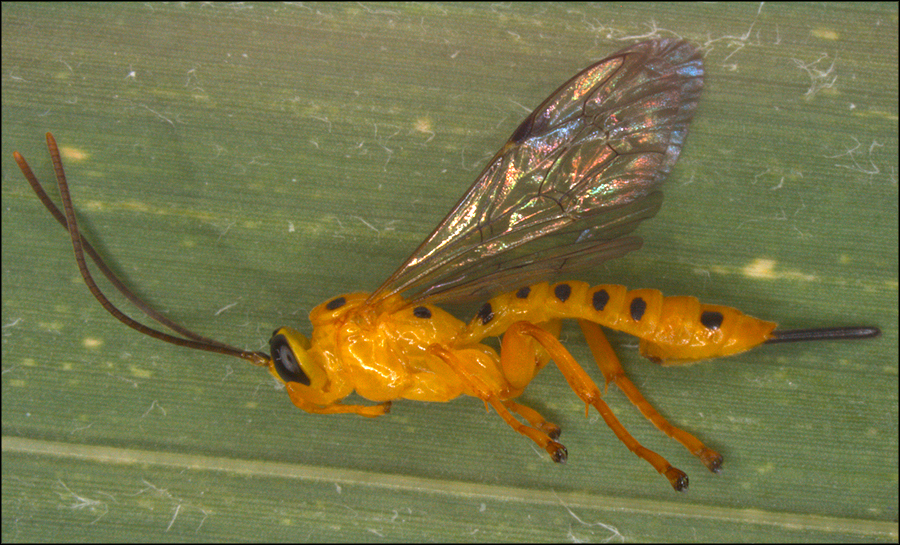
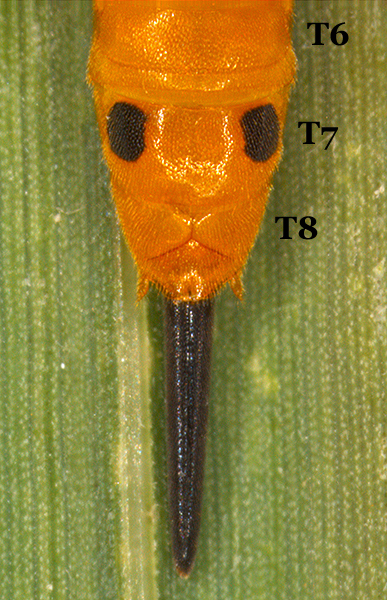 Adult female: lateral view; abdomen, apex Adult female: lateral view; abdomen, apex
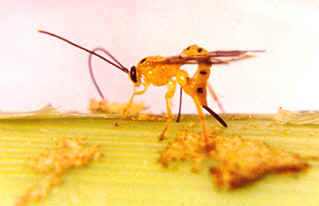 Adult female parasitising sorghum stem borer Adult female parasitising sorghum stem borer
Distribution
This species is widely distributed in the Oriental region, including India. It has been successfully introduced in Mauritius and with partial success in Madagascar and South Africa.
Hosts
The species of Xanthopimpla are important parasitoids of lepidopterous stem borers of cereals, sugarcane, and sometimes, other crops. The species are easy to recognise and almost all known
species are more or less bright yellow in colour, with or without black spots on various parts of the body. Besides Xanthopimpla stemmator, X. punctata and X. pedator are also commonly found in
India.
Xanthopimpla stemmator is a common parasitoid of several stem borers such as Chilo partellus, C. infuscatellus, C. sacchariphagus, C. auricilius, C. suppressalis, Sesamia inferens, and Scirpophaga incertulas in India and several other parts of the Oriental region.
References
- Barrion, A.T. and Litsinger, J.A. 1994. Taxonomy of rice insect pests and their arthropod parasites and predators, pp. 13-262. In: Biology and Management of Rice Insect Pests (Ed. E.A. Heinrichs). Wiley Eastern Limited / New Age International Limited, New Delhi. 779 p.
- Zwart, K.W.R., 1998. 20. Ichneumonidae, pp. 205-258. In: African Cereal Stem Borers: Economic importance, natural enemies and control (Ed. A. Polaszek). CAB International, 530 p.
|